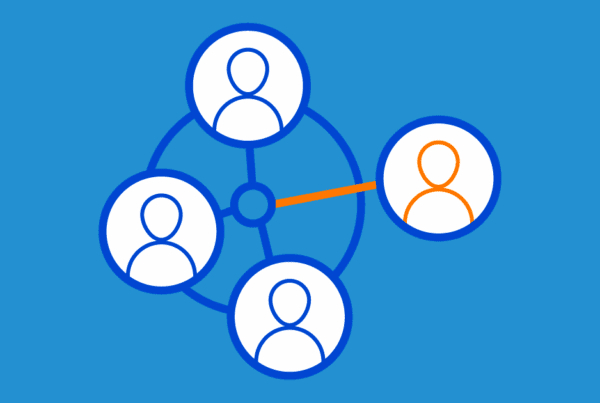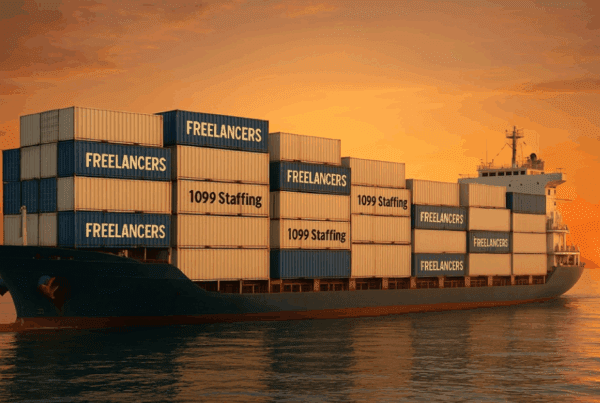
The business world is over creative agencies.
At least, traditional creative agencies. For decades, recruiting an agency to launch a campaign or help with social media wasn’t just a task- it was an experience. Initial agency pitches could go on for hours, with fancy slide presentations promising endless success and various swag given out at the end to seal the deal.
And for the most part, this strategy worked and agencies won business left and right.
Fast forward to 2021: the world of work has completely transformed, and traditional ways have been thrown in favor of remote, digital strategies that are aligned with what the world is moving toward.
Agility is key to surviving in the business world in present times, and agencies are not immune to this need, either. Complete full-time teams limit agency abilities, and agency leaders need to keep up with the demand from clients, which can eventually stunt growth and knock their business out of the running.
Fortunately, there is a way to shift with the changes in the world- if agencies are willing to let go of their former identities. Digital rules in current times, and efficiency is at the top of organization’s minds. If agency owners want to win more business, they need to follow suit of the business world and adopt flexible models that allow them to flex talent where needed, on-demand.
Is it possible for agencies to make the shift without losing their core identity? Yes- and here’s how.
Traditional agency models were all about show
A few years ago, hiring an agency came with more than just a contract- it was also a show.. Creative agencies prided themselves on the client experience, from large pitches with fancy powerpoints to branded “swag” given out as gifts after signing.
Let’s start with the pitches- although they may seem like just a PowerPoint presentation, there’s much more to them than just slides. These pitches, also known as RFPs (Request For Proposal), are requirements that large companies make for agencies who are presenting to them that include goals, budget, and timeline, and can take 3-6 months to complete. And even with all this work, the agency may not end up winning the account, using countless hours only to come out empty-handed. There are multiple steps and agency staff involved in this process, meaning getting to the “actual” work isn’t as easy as you’d think.
Business leaders ate it up- but it wasn’t all free. The cost of these “perks” that business owners and executives enjoyed were included in the contracts, from the beautiful agency offices down to the 32-ounce, branded HydroFlask passed on to them as a “celebration.” In 2020, the average cost of non-working hours (expenses not directly driving sales or put toward the client’s campaign) that businesses paid to agencies was $4,000- a lot of money for expenses not even related to the contract.
Now, in the digital era, businesses don’t care about grandiose: they want success, and they don’t want to pay the extravagant prices agencies used to charge for it. The speed of change in the world is showing no signs of slowing down, and businesses are more concerned with how they’ll keep up instead of how flashy their agency can be.
Talent is a top priority in 2021; 95 percent of business leaders say it’s very or somewhat challenging for their company to find skilled professionals, with 97 percent of those respondents saying creative and marketing talent is a challenge to find. With many organizations having a difficult time tracking down the talent they need, they’re looking to agencies to provide the creative talent they need. With the need for extravagance quickly shrinking, and relying on older, full-time models, agencies are facing a reckoning that challenges decades-old expectations and requires a complete overhaul of their model.
Complete full-time teams can stunt agency growth
Employee burnout is at an all-time high: in a recent study conducted by Deloitte, 77 percent of employees reported feeling burned out in their current role. Combine this burnout with the stress of the world returning to normal, and full-time staff are only just beginning a rather stressful journey. For agencies relying only on full-time teams, this spells trouble.
With creative work in high demand as the world rebounds from the pandemic, agency staff are already stretched trying to fulfill client needs. Twenty-eight percent of agencies have reported seeing an increase in project work during the pandemic, putting extra pressure on staff to keep up with the growing workload.
As agency workers scramble to keep up with client demands, they’re also dealing with digital transformation. This movement hasn’t stopped or slowed down in response to the pandemic, and creative workers are learning they need to constantly be evolving to meet the developing needs of clients. Add in the fact that simultaneously, these professionals are trying to adapt to the new demands of their agency’s back-to-work plan- and agencies have a problem that could very well end up stunting any growth they’d hope to experience post-pandemic.
Flexible talent helps agencies meet customer needs without getting stuck
We know about the issues happening within agency models at the moment. And while it may seem agencies are beginning to see their golden era fade, this is one change to their model that can easily help them meet client needs without stretching staff: flexible talent.
Full-time agency staff can’t handle the amount of work being thrown at them while also being expected to adapt easily to the movement toward the “new normal” and expected to keep up with digital transformation (we’re out of breath just listing all that). Flexible talent, aka independent contractors, can help fill in where full-time staff need help the most, from filling in for specific skill sets staff may not have learned yet to taking on client projects entirely.
In addition to skills, flexible talent can also help slash costs. Flexible workers typically work remotely, negating the need for an office space that could cost an agency potentially thousands of dollars per year. Combine this with the remote work movement, and agencies have no need for an office at all, saving hundreds of thousands of dollars that can be put toward hiring more flexible talent meant to increase client capacity, and ultimately incredible growth.
Hiring can be another excessive cost for agencies, especially when it comes to filling skill needs, fast. Deep talent platforms, such as FlexTal, can help agencies cut costs even further by matching them with flexible talent on-demand, typically within just 7-10 days. The platform takes care of all the finding, vetting, and hiring for the agency, making the agency model more agile than ever before at a lower cost than imagined.
The world, especially the business world, has left the era of pomp and circumstance in favor of digital, agile strategies that are more efficient and move us forward quickly. Agencies who want to tap into the rapid growth that can come in this digital era must learn to adapt their model to become more responsive to these changes, and use flexible talent to their competitive advantage in a landscape that no longer heeds to tradition.
FlexTal is the #1 flexible talent matching platform. Every day, we match organizations with pro-level independent contractors for flexible hourly and project-based engagements. Match with the Right Pro, Right Now.



